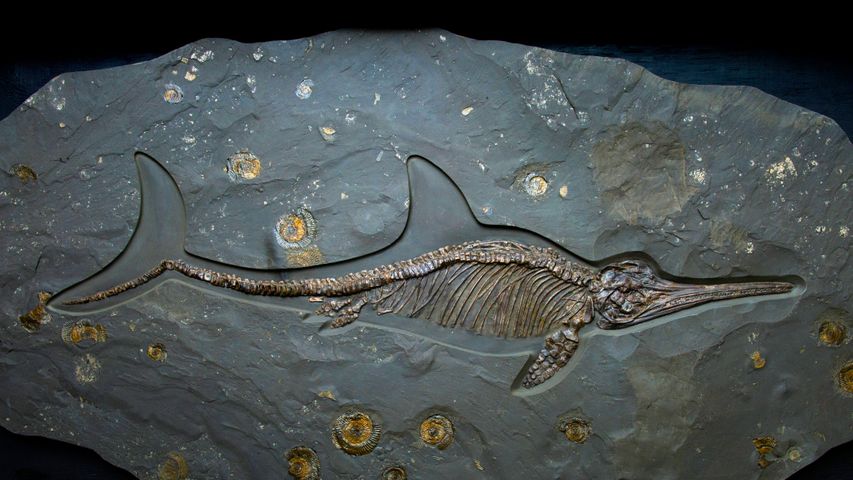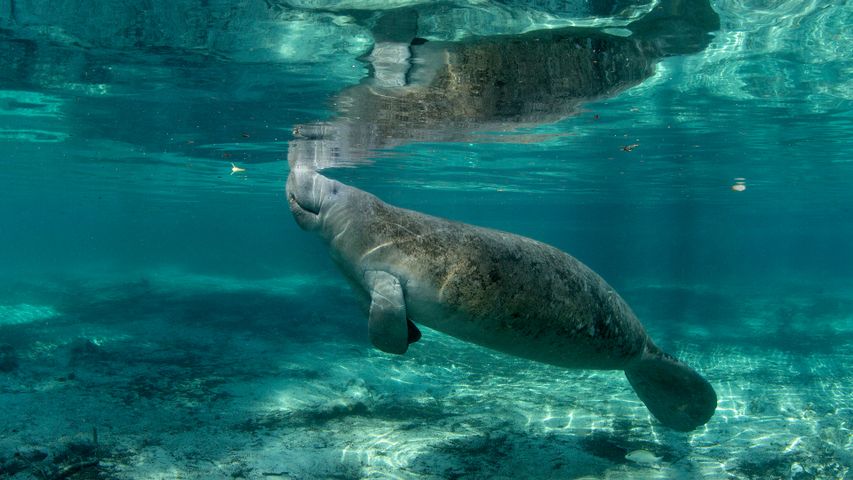An ichthyosaur fossil of the Jurassic period, Dinosaurland Fossil Museum, Lyme Regis, Dorset
© Christopher Jones/Alam
Mary's monster find
When 12-year-old Mary Anning uncovered the complete skeleton of a fish-like creature near her home in Lyme Regis, Dorset in 1811, extinction was a new idea in science. Could an entire species really die out? Or were these 17ft sea monsters still lurking somewhere in the depths of the English Channel?
The fact that ichthyosaurs like this went extinct 90 million years ago seems obvious today. But before the 19th century, Western tradition held that the world was created complete and perfect. An extinction would interrupt the great chain of being and was therefore impossible. Mary’s finds contradicted that idea. At around the same time, the French zoologist Georges Cuvier developed his theory of animal extinction, based on his analysis of mammoth remains.
Mary’s prolific fossil finds on England’s south coast fuelled both public interest and scientific understanding, and she even discovered two more species in her 20s: the pterodactyl and the plesiosaur. She died young at 47 and, as a woman in Victorian society, was largely denied recognition by her contemporaries but her influence endures like the fossils that fascinated her.
Related Images
Bing Today Images





 Northern gannets diving for fish, Shetland Islands, Scotland
Northern gannets diving for fish, Shetland Islands, Scotland
 Rainbow River in Rainbow Springs State Park, Florida, United States
Rainbow River in Rainbow Springs State Park, Florida, United States
 Sea turtle, Fernando de Noronha, Brazil
Sea turtle, Fernando de Noronha, Brazil
 Steller sea lions, Vancouver Island, British Columbia, Canada
Steller sea lions, Vancouver Island, British Columbia, Canada
 Atlantic spotted dolphins near Santa Maria Island, Azores, Portugal
Atlantic spotted dolphins near Santa Maria Island, Azores, Portugal
 Manatee in Crystal River, Florida, United States
Manatee in Crystal River, Florida, United States
 Group of giant cuttlefish in Spencer Gulf, off Whyalla, South Australia
Group of giant cuttlefish in Spencer Gulf, off Whyalla, South Australia
 Humpback whale mother and calf, Tonga
Humpback whale mother and calf, Tonga
